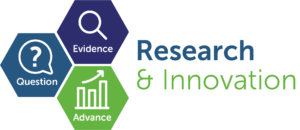Type of publication:
Journal article
Author(s):
Matei, Ana; *Chin, Yew Fung; Hughes, Thomas; Mahmalji, Wasim.
Citation:
Cureus. 17(7):e87891, 2025 Jul.
Abstract:
Background and aim Patient information leaflets (PILs) printed in paper form are a commonly used adjunct tool in urology clinics. These help to facilitate the information transfer between doctor and patient. They are detrimental to the environment and costly. Quick response (QR) codes can be used as another option for delivering the leaflets and would reduce the environmental burden. The aim of this paper is to evaluate patient response to the introduction of QR codes as a replacement for paper-based PILs. Methods This pilot study followed the introduction of QR codes of commonly used leaflets sourced from the British Association of Urological Surgeons (BAUS). The study was conducted in a urology clinic at the Hereford County Hospital over a one-month period. The acceptability of the QR codes was recorded. Data such as patient demographics and the type of leaflet were also documented and tabulated. Results Thirty-one patients required PILs, out of which 80% agreed to PILs via QR codes. The mean age of the participating patients was 76. The replacement of paper with QR codes for the one-month period reflects an average estimated saving of 1.88 kg of carbon dioxide emissions and around 238 sheets of paper. Discussion The introduction of QR codes has seen an increase in most sectors, including, more recently, the medical industry. They can be used with a wide range of functions within the industry ranging from medical education to patient identification. These can also be more easily distributed in various forms to cater to all needs. Limitations, such as the currently limited variety of urology PILs available, also need to be considered. Conclusion QR codes of the PILs are a generally accepted alternative. The widespread introduction of QR codes reduces the total environmental impact of paper documents while also reducing production costs.
DOI: 10.7759/cureus.87891
Link to full-text [open access - no password required]


